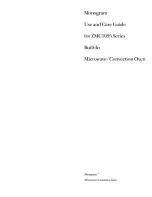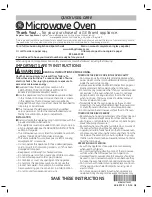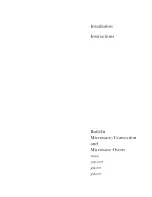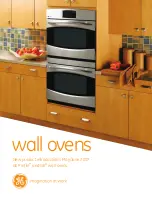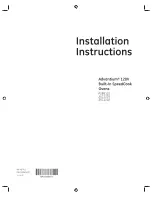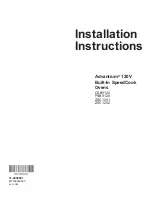
HEATING
DEFROSTING
13
Your microwave is ideal for thawing. Thawing
times are usually considerably shorter than in
traditional methods. Here are a few tips. Take the
frozen item out of its packaging and place on a
plate for thawing.
BOXES AND CONTAINERS
Boxes and containers suitable for microwaves are
particularly good for thawing and heating food, since
they can withstand temperatures in a deep freeze
(down to approx. -40° C) as well as being heat-
resistant (up to approx. 220° C). You can therefore
use the same container to freeze, thaw, heat and even
cook the food, without having to transfer it.
COVERING
Cover thin parts with small strips
of aluminium foil before thawing.
Thawed or warm parts should
likewise be covered with
aluminium strips during thawing.
This stops the thin parts becoming too hot while
thicker parts are still frozen.
CORRECT SETTING
It is better to choose a setting which is too low
rather than one which is too high. By so doing you
will ensure that the food thaws evenly. If the
microwave setting is too high, the surface of the
food will already have begun to cook while the
inside is still frozen.
TURNING/STIRRING
Almost all foods have to be
turned or stirred from time to
time. As early as possible,
separate parts which are stuck
together and rearrange them.
SMALL AMOUNTS...
thaw more quickly and evenly than larger ones.
We recommend that you freeze portions which are
as small as possible. By so doing you will be able
to prepare whole menus quickly and easily.
FOODS REQUIRING CAREFUL HANDLING,
Foods such as gateaux, cream, cheese and bread
should only be partially thawed and then left to
thaw completely at room temperature. By so doing
you will avoid the outer areas becoming too hot
while the inside is still frozen.
STANDING TIME
This is particularly important after thawing food, as
the thawing process continues during this period.
In the thawing table you will find the standing
times for various foods. Thick, dense foods require
a longer standing time than thinner foods or food
of a porous nature. If the food has not thawed
sufficiently, you may continue thawing it in the
microwave oven or lengthen the standing time
accordingly. At the end of the standing time you
should process the food as soon as possible and
not re-freeze it.
●
Ready-prepared meals in aluminium containers
should be removed from the aluminium
container and heated on a plate or in a dish.
●
Food should be covered with microwave cling
film, a plate or cover (obtainable from stores),
so that the surface does not dry out. Drinks need
not be covered.
●
Remove the lids from firmly closed containers.
●
When boiling liquids such as water, coffee, tea
or milk, place a glass stirrer in the container.
●
If possible, stir large quantities from time to
time, to ensure that the temperature is evenly
distributed.
●
The times are for food at a room temperature of
20° C. The heating time for food stored in a
refrigerator should be increased slightly.
●
After heating allow the food to stand for 1-2
minutes, so that the temperature inside the food
can be evenly distributed (standing time).
●
The times given are guidelines which can be
varied according to the initial temperature,
weight, water content, fat content or the result
which you wish to achieve.
FINAL VS-72D-EU English 09/06/2004 10:06 Page 13































